How to generate percussion patterns using an arpeggiator
Let's take an unusual route to sequenced beats
Arpeggiators divide up a chord's notes into a single stream of ordered notes. Once applicable only to synthesizers, we can now take the concept and apply it to any MIDI data stream.
Here, we've assigned several drum hits across a drum sampler's pads. By stacking chord notes, then arpeggiating them, we create a 'round robin' sequence of percussion hits, automatically cycling through the multiple drum samples. The arpeggiators are then adjusted, providing speed and timing alterations that would take ages to draw in by hand. It's a technique that's great for the buzzing closed hi-hat repetitions heard in hip-hop and trap, or even for robotic drum rolls and pre-drop build-ups.
We've used Ableton Live 9's Drum Rack and Arpeggiator here, but you can use any DAW, drum sampler and arpeggiator plugin combination to achieve a similar result.
For more on MIDI effects, pick up Future Music 289, on sale now.
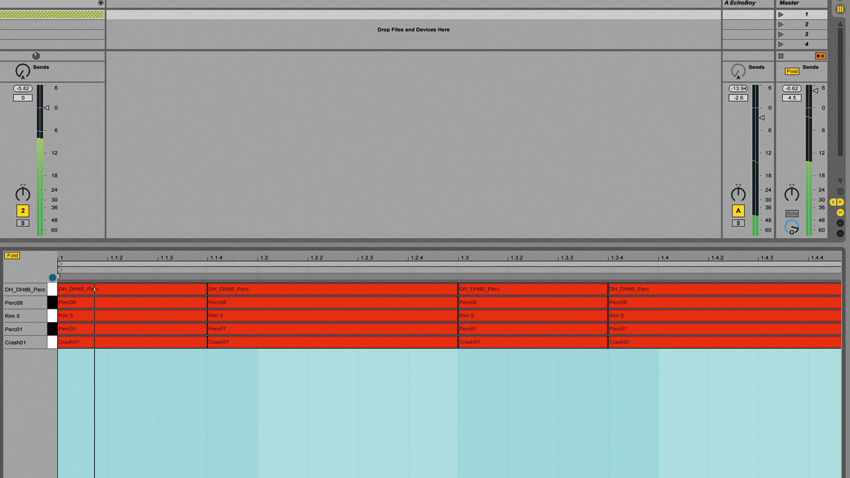
Step 1: A variety of percussion and noise samples have been loaded into a drum sampler. We've programmed the samples' MIDI notes on top of each other - this 'chord' plays back all of the samples at the same time. Touches of delay add character and rhythm.
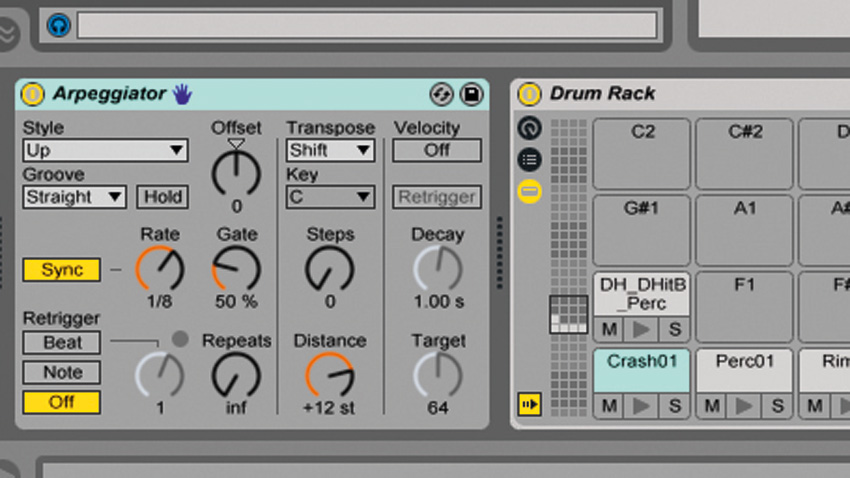
Step 2: An arpeggiator divides the individual notes of incoming chords into a monophonic sequence. Live 9's Arpeggiator device is added before the Drum Rack in the chain - it's listening to our stack of incoming MIDI notes and triggering each sample in turn.
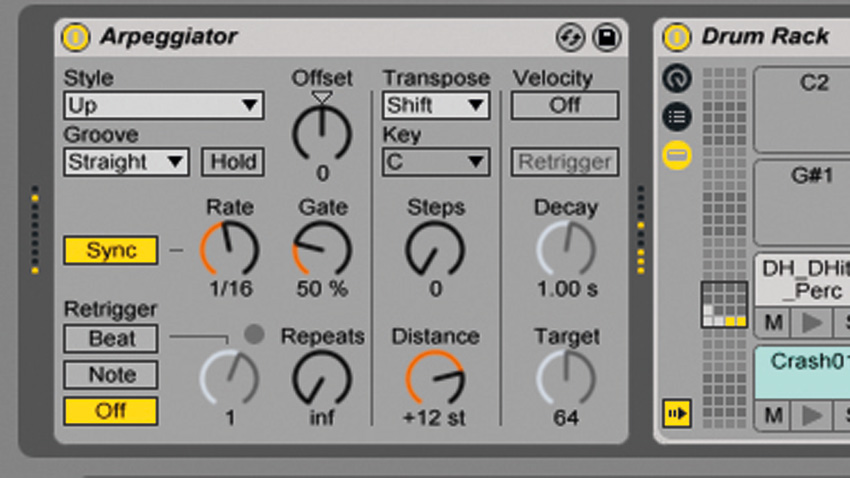
Step 3: Changing the arpeggiator's Rate parameter will speed up or slow down the sequence, cycling through more or less of the percussion hits to create different rhythmic patterns. Slower speeds mean less samples are triggered; a rate of 1/16 gives us a rolling, techno-esque groove.
Get the MusicRadar Newsletter
Want all the hottest music and gear news, reviews, deals, features and more, direct to your inbox? Sign up here.
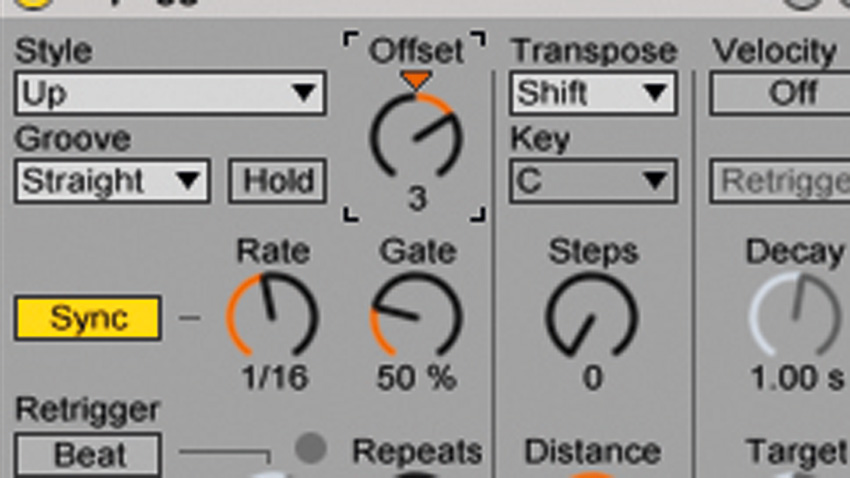
Step 4: The arpeggiator's Offset value shifts the start note of the sequence, changing the playback order of the percussion hits; in this context, this can be used to determine the first sample in the pattern. It's now easy to try out various rhythms and percussion combinations at the current speed.
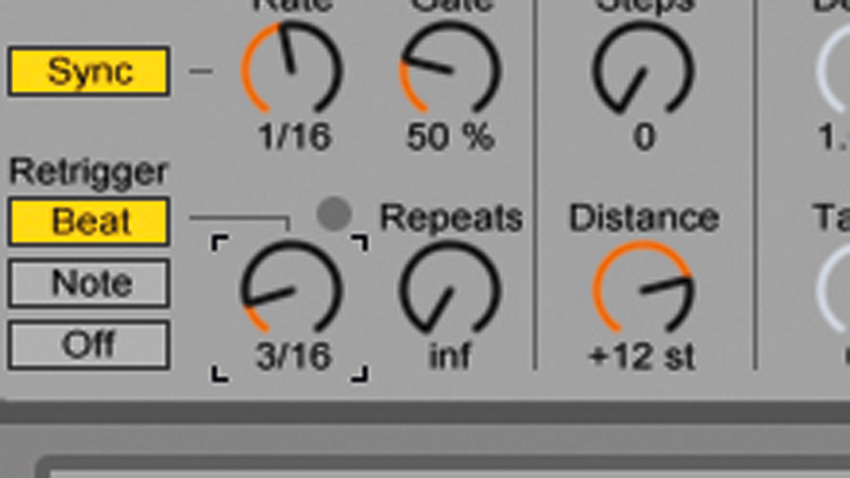
Step 5: By retriggering the sequence from the start (via the Retrigger section), odd repetitions and interesting patterns can be discovered. Faster settings create short loops for build-ups and rolls; 3/16 and 3/8 settings offer more interesting broken sequences.
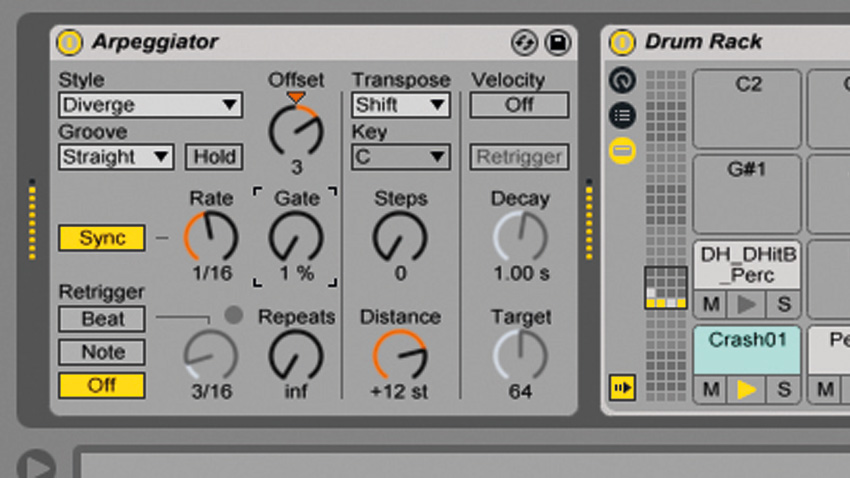
Step 6: The various arpeggiator styles define note order, changing the feel of the pattern. Gate shortens or lengthens each note - lower values give a stuttering feel. Get creative with quick pattern variation and improvisation by sequencing percussion patterns on a single arpeggiator interface.
Future Music is the number one magazine for today's producers. Packed with technique and technology we'll help you make great new music. All-access artist interviews, in-depth gear reviews, essential production tutorials and much more. Every marvellous monthly edition features reliable reviews of the latest and greatest hardware and software technology and techniques, unparalleled advice, in-depth interviews, sensational free samples and so much more to improve the experience and outcome of your music-making.










